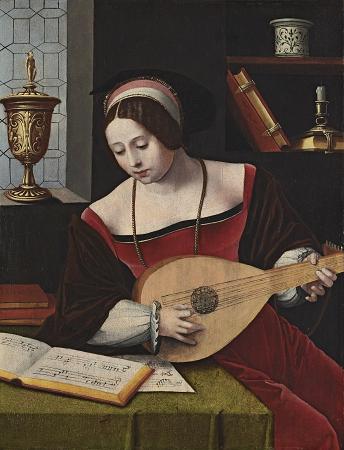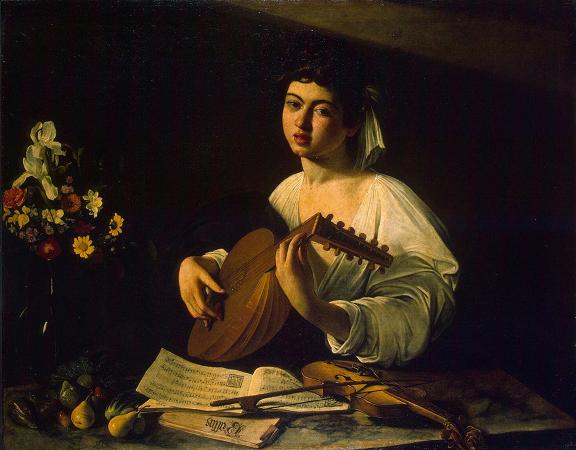Genre with Lute. A lute is any plucked string instrument with a neck and a deep round back enclosing a hollow cavity, usually with a sound hole or opening in the body. More specifically, the term lute can refer to an instrument from the family of European lutes. The term also refers generally to any string instrument having the strings running in a plane parallel to the sound table. The strings are attached to pegs or posts at the end of the neck, which have some type of turning mechanism to enable the player to tighten the tension on the string or loosen the tension before playing, so that each string is tuned to a specific pitch. The lute is plucked or strummed with one hand while the other hand frets the strings on the neck's fingerboard. By pressing the strings on different places of the fingerboard, the player can shorten or lengthen the part of the string that is vibrating, thus producing higher or lower pitches. The European lute and the modern Near-Eastern oud descend from a common ancestor via diverging evolutionary paths. The lute is used in a great variety of instrumental music from the Medieval to the late Baroque eras and was the most important instrument for secular music in the Renaissance. During the Baroque music era, the lute was used as one of the instruments which played the basso continuo accompaniment parts. It is also an accompanying instrument in vocal works. The lute player either improvises a chordal accompaniment based on the figured bass part, or plays a written-out accompaniment. As a small instrument, the lute produces a relatively quiet sound. The player of a lute is called a lutenist, lutanist or lutist, and a maker of lutes is referred to as a luthier. Curt Sachs defined the word lute in the terminology section of The History of Musical Instruments as composed of a body, and of a neck which serves both as a handle and as a means of stretching the strings beyond the body. His definition focused on body and neck characteristics and not on the way the strings were sounded, so the fiddle counted as a bowed lute. Sachs also distinguished between the long-necked lute and the short-necked variety. The short necked variety contained most of our modern instruments, lutes, guitars, hurdy-gurdies and the entire family of viols and violins. The long lutes were the more ancient lutes; the Arabic tanbur.faithfully preserved the outer appearance of the ancient lutes of Babylonia and Egypt. He further categorized long lutes with a pierced lute and long neck lute. The pierced lute had a neck made from a stick that pierced the body. The long lute had an attached neck, and included the sitar, tanbur and tar. Sachs' book dates from 1941, and the archaeological evidence available to him placed the early lutes at about 2000 B.C. Discoveries since then have pushed the existence of the lute back to c. 3100 B.C. Musicologist Richard Dumbrill today uses the word lute more categorically to discuss instruments that existed millennia before the term lute was coined. Dumbrill documented more than 3000 years of iconographic evidence for the lutes in Mesopotamia, in his book The Archaeomusicology of the Ancient Near East. According to Dumbrill, the lute family included instruments in Mesopotamia prior to 3000 BC. He points to a cylinder seal as evidence; dating from c. 3100 BC or earlier the seal depicts on one side what is thought to be a woman playing a stick lute. Like Sachs, Dumbrill saw length as distinguishing lutes, dividing the Mesopotamian lutes into a long variety and a short.
more...













